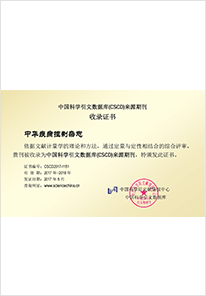2020 Vol. 24, No. 9
Display Method:
2020, 24(9): 993-996.
doi: 10.16462/j.cnki.zhjbkz.2020.09.001
Abstract:
2020, 24(9): 997-1002.
doi: 10.16462/j.cnki.zhjbkz.2020.09.002
Abstract:
2020, 24(9): 1003-1008.
doi: 10.16462/j.cnki.zhjbkz.2020.09.003
Abstract:
2020, 24(9): 1009-1014, 1026.
doi: 10.16462/j.cnki.zhjbkz.2020.09.004
Abstract:
2020, 24(9): 1015-1020, 1109.
doi: 10.16462/j.cnki.zhjbkz.2020.09.005
Abstract:
2020, 24(9): 1027-1031.
doi: 10.16462/j.cnki.zhjbkz.2020.09.007
Abstract:
2020, 24(9): 1032-1036, 1078.
doi: 10.16462/j.cnki.zhjbkz.2020.09.008
Abstract:
2020, 24(9): 1037-1041.
doi: 10.16462/j.cnki.zhjbkz.2020.09.009
Abstract:
2020, 24(9): 1042-1045, 1091.
doi: 10.16462/j.cnki.zhjbkz.2020.09.010
Abstract:
2020, 24(9): 1057-1062.
doi: 10.16462/j.cnki.zhjbkz.2020.09.013
Abstract:
2020, 24(9): 1068-1072.
doi: 10.16462/j.cnki.zhjbkz.2020.09.015
Abstract:
2020, 24(9): 1073-1078.
doi: 10.16462/j.cnki.zhjbkz.2020.09.016
Abstract:
2020, 24(9): 1079-1082, 1105.
doi: 10.16462/j.cnki.zhjbkz.2020.09.017
Abstract:
2020, 24(9): 1087-1091.
doi: 10.16462/j.cnki.zhjbkz.2020.09.019
Abstract:
2020, 24(9): 1092-1095.
doi: 10.16462/j.cnki.zhjbkz.2020.09.020
Abstract:
2020, 24(9): 1106-1109.
doi: 10.16462/j.cnki.zhjbkz.2020.09.023
Abstract:
2020, 24(9): 1110-1112.
doi: 10.16462/j.cnki.zhjbkz.2020.09.024
Abstract:
2020, 24(9): 1113-1116.
doi: 10.16462/j.cnki.zhjbkz.2020.09.025
Abstract:


 Email alert
Email alert RSS
RSS Abstract
Abstract HTML
HTML PDF
PDF





